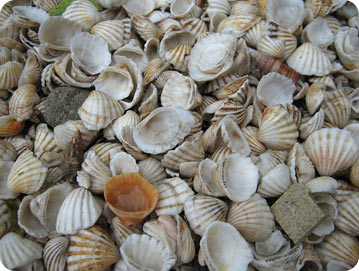A century after the Vikings began colonizing Iceland, life there was desperate. An Icelandic saga recorded that crops failed, creating a famine. The old and helpless were killed and their bodies thrown over cliffs, and the survivors were forced to eat anything they could catch, no matter how unappetizing.
 Seashells are being used to plot temperatures changes in Iceland . Credit: Wikipedia.
Seashells are being used to plot temperatures changes in Iceland . Credit: Wikipedia.The woes were caused by a drastic change in climate. And the shells of long-dead molluscs have revealed just how drastic.
A team of scientists used the shells of 26 molluscs found in sediments off Iceland’s coast to plot temperature changes from around 360 B.C. to A.D 1660. The scientists measured two forms of oxygen in the shells. The ratio of the two forms preserved a record of water temperatures during each mollusc’s lifetime. Since the molluscs lived close to shore, the water temperature is a good indicator of the air temperature.
The research showed that by the time the Vikings first began colonizing Iceland, around the year 865, the climate had been unusually warm for a couple of centuries. Soon afterwards, though, the climate began to cool -- first winters, then summers. Within decades, average temperatures dropped by more than 10 degrees Fahrenheit.
The colder conditions drastically shortened the growing season, making it harder to raise crops, and hay for the livestock. The cold also created more sea ice, making it harder for the settlers to trade with their native Scandinavia. So Iceland became especially icy -- and an unpleasant place for its Viking settlers.

